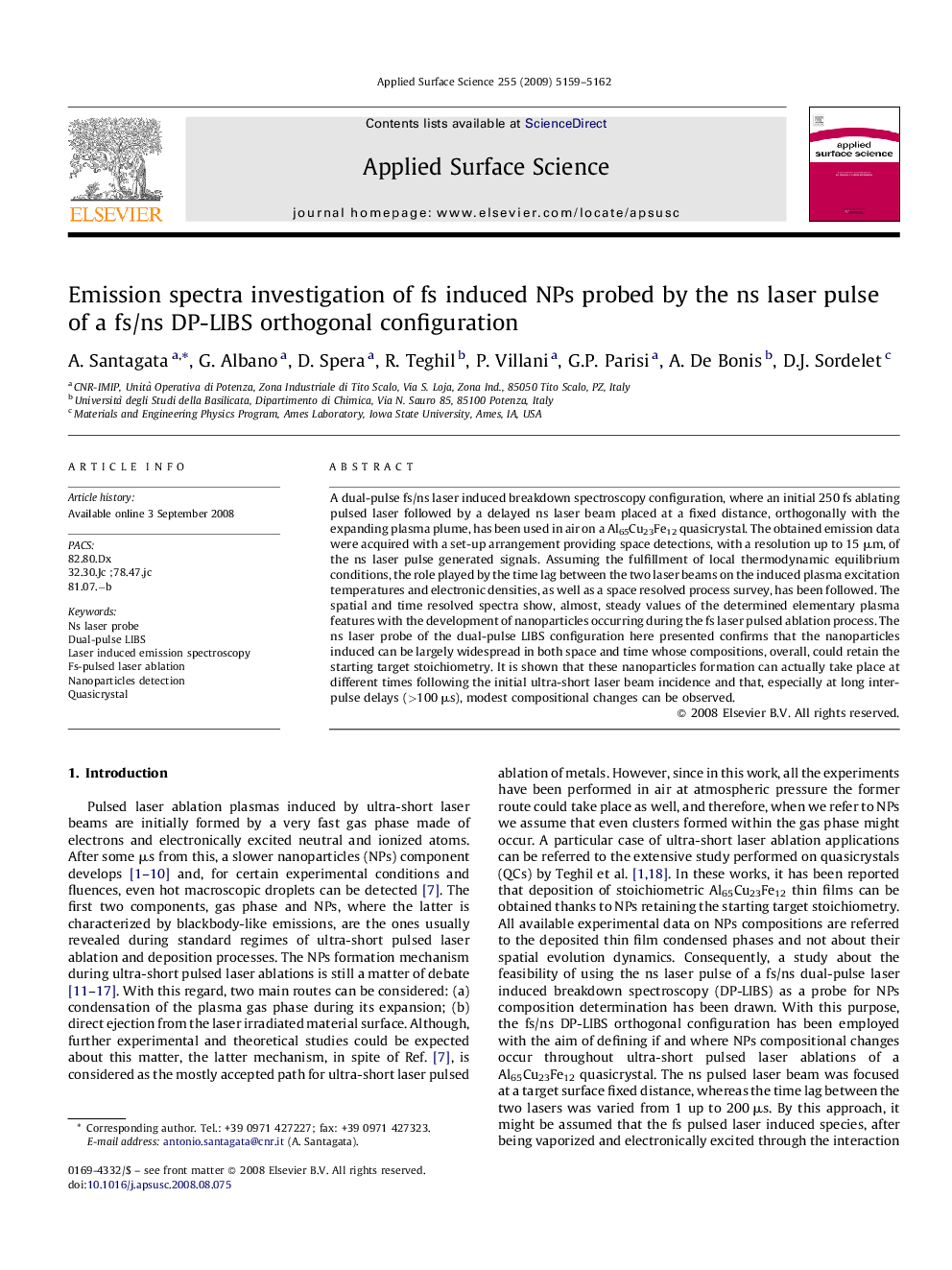| Article ID | Journal | Published Year | Pages | File Type |
|---|---|---|---|---|
| 5367513 | Applied Surface Science | 2009 | 4 Pages |
A dual-pulse fs/ns laser induced breakdown spectroscopy configuration, where an initial 250 fs ablating pulsed laser followed by a delayed ns laser beam placed at a fixed distance, orthogonally with the expanding plasma plume, has been used in air on a Al65Cu23Fe12 quasicrystal. The obtained emission data were acquired with a set-up arrangement providing space detections, with a resolution up to 15 μm, of the ns laser pulse generated signals. Assuming the fulfillment of local thermodynamic equilibrium conditions, the role played by the time lag between the two laser beams on the induced plasma excitation temperatures and electronic densities, as well as a space resolved process survey, has been followed. The spatial and time resolved spectra show, almost, steady values of the determined elementary plasma features with the development of nanoparticles occurring during the fs laser pulsed ablation process. The ns laser probe of the dual-pulse LIBS configuration here presented confirms that the nanoparticles induced can be largely widespread in both space and time whose compositions, overall, could retain the starting target stoichiometry. It is shown that these nanoparticles formation can actually take place at different times following the initial ultra-short laser beam incidence and that, especially at long inter-pulse delays (>100 μs), modest compositional changes can be observed.
